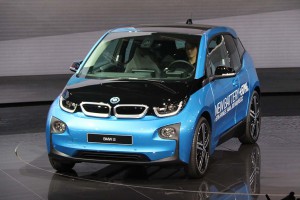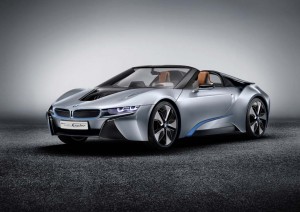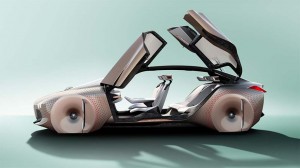BMW will launch two more models for its cutting-edge i brand over the next five years, starting with a 2018 roadster based on the next-generation i8 plug-in hybrid sports car. A version of the iNext concept vehicle will follow three years later.
That falls well short of the broad, electrified product line-up the maker had hinted was in the works only a few years ago, however. There are no signs of the i4 and i5 models that some sources once reported were in the works.
Is BMW just keeping them under tight wraps? Have they been abandoned? Or has the maker simply shifted strategy, preferring to put more of its battery-based models – including pure electric and plug-in hybrids – into the mainstream BMW brand, rather than into the niche i marque?
“It appears that what they’re doing is changing where some of these vehicles would be in the brand family,” said analyst Stephanie Brinley, of IHS Automotive, “not walking away” from adding more battery-based products.

The update i3 gets a bigger battery and longer range but still misses the critical 200-mile range target.
The i brand, Brinley and other sources indicated, may stick with more exotic products, while more mainstream, electrified offerings will carry BMW’s more familiar “spinner” badge.
(BMW rides into the future with the self-stabilizing Vision Next 100 motorcycle concept. Click Here to check it out.)
Automakers are split in their approach to electrification. Some are following the approach pioneered by Toyota with the Prius, opting for distinct designs and platforms optimized for battery power and able to visually stand out in a crowd.
Some are going a step further. BMW created a whole new brand with models like the current i3 city car and the i8. Daimler AG announced a similar approach at last month’s Paris Motor Show. BMW’s arch-rival unveiled the Generation EQ concept and CEO Dieter Zetsche announced the creation of the Mercedes-EQ sub-brand for future electric products that will get a unique architecture designed to optimize things like range, performance and interior space.
BMW is clearly also planning to optimize battery car design, using unique architectures that will change the fundamental vehicle layout. Batteries, for example, will move under the load floor to improve the center of gravity and improve space utilization. But there will also be electrified versions of conventional products. The next-generation 5-Series, for example, will get a plug-in hybrid driveline for the first time.
“Electrification in the BMW Group will go into all brands,” CEO Harald Krueger emphasized during the automaker’s 100th anniversary celebration in Los Angeles last week.
(Click Here for more on the 2017 BMW 5-Series makeover.)
The only confirmed new models set to go into the electric sub-brand are the i8 Roadster and the iNext.
The roadster will be based on the next-generation version of the i8. We got a hint of what’s in store in the form of the i8 Spyder Concept first shown at the 2012 Beijing Motor Show. Don’t be surprised to see a more powerful lithium-ion battery pack that should boost both electric-mode range and performance. Some reports suggest combined output from the gas and electric sides of the drivetrain will push it up to more than 400 horsepower compared to 354 today.
Then there’s the iNext. We’ve gotten some hints of what it might look like in the form of the Vision Next 100 concept vehicle that is one of four centennial prototypes. Back in May, at the BMW annual meeting, CEO Krueger suggested it will feature “autonomous driving, digital connectivity, (and an) intelligent lightweight design.”
It will be on a par with the flagship BMW 7-Series, and will target the likes of today’s Tesla Model S.
During his appearance in Los Angeles last week, Krueger made it clear that battery-based vehicles will have to deliver improvements in range, performance and pricing in order to go mainstream. Among other things, a pure battery-electric model must “absolutely” get more than 200 miles per charge, while charging times will eventually need to come down to as little as five to ten minutes using the latest Level 3 superchargers and the even more advanced Level 4 systems now under development.
What’s clear is that BMW is going to push into further into electrified vehicle technology going forward. Where and how those products will be badged and marketed remains to be seen.
(BMW CEO Krueger targets a rapidly changing auto industry. Click Here to see what changes are coming.)


